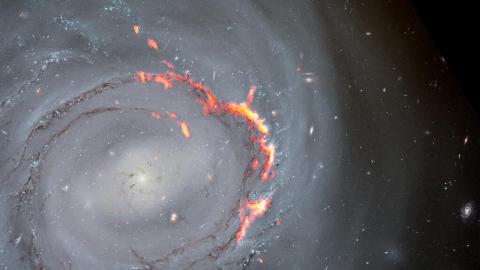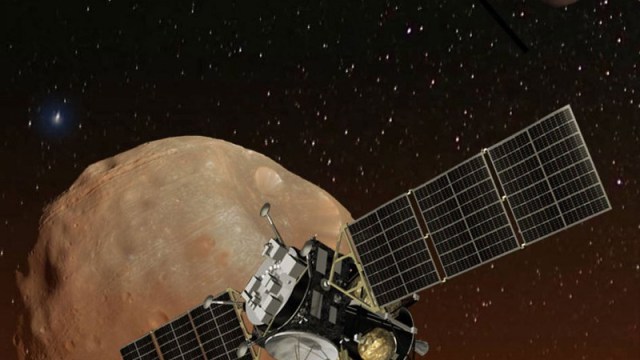Cosmic boomerang offers a lifeline to dying galaxies

Credit: ALMA (ESO/NAOJ/NRAO)/S. Dagnello (NRAO), NASA/ESA/Hubble/K. Cook (LLNL), L. Shatz
- Ram pressure stripping can kill a galaxy by driving all of its star-making gas out into the void.
- A new study proves that, sometimes, the expelled gas can return to the galaxy from which it was ejected.
- Future research will try to discover why this phenomenon occurs.
In a study confirming an event long theorized but never seen, a team of astrophysicists has observed gas from a distant galaxy being pulled out of it only to boomerang back in. Thefindings, soon to be published in Astrophysical Journal, shed light on galactic evolution.
Cosmic boomerang
The study focused on what happens after ram pressure stripping — an effect caused by pressure from the intergalactic medium pushing on gas within a galaxy — drives the gas used by galaxies to make new stars out into the void of deep space.
Over time, this effect can deprive a galaxy of the ability to make new stars. In as little as 100 million years, a galaxy can go from robust to impotent. The effect often causes galaxies to take on long tails of gas as they move through the universe. While it has been theorized that some of the gas could fall back into the galaxy and again be used for star formation, this has never been seen before.
Lead author William Cramer said, “Effects like ram pressure that can speed up the normal galaxy lifecycle are very important to understand.” Indeed. A strong ram pressure can kill a galaxy.
Using the Atacama Large Millimeter Array (ALMA) radio telescope in Chile, the researchers were able to create a map of the gas in the galaxy NGC 4921 as it underwent ram pressure stripping. At first, the gas was stretched into long filaments, with one end connected to newly forming stars. This gas was dense and appeared to be resisting the pressure to be stripped away.
This was not entirely expected, and the authors suggest that this could be caused by:
“…the head of the filament [being] a dense region of gas which resisted ram pressure as the surrounding gas was pushed away, and that the body of the filament is ablated gas that was stripped away from the dense cloud at the head.”
Coauthor Jeffrey Kenney argues that magnetic effects are also likely playing some role here.
The maps also show that some of the gas that is stripped falls back into the galaxy — circling back like a boomerang. As Cramer explained toYale News,”Instead of being thrown out never to return, some of this gas is moving like a boomerang, being ejected but then circling and falling back to its source.”
While the effects of ram pressure stripping have been observed before, research on how this affects thedisks of galaxies is harder to come by. The direct evidence of the star-making material falling back into the galaxy is also a brand new discovery which, in addition to confirming the models that researchers use to understand galaxies, will also help scientists make better predictions about the rate of star formation.
Future research likely will include efforts to find more examples of this boomerang effect in order to better understand it.





